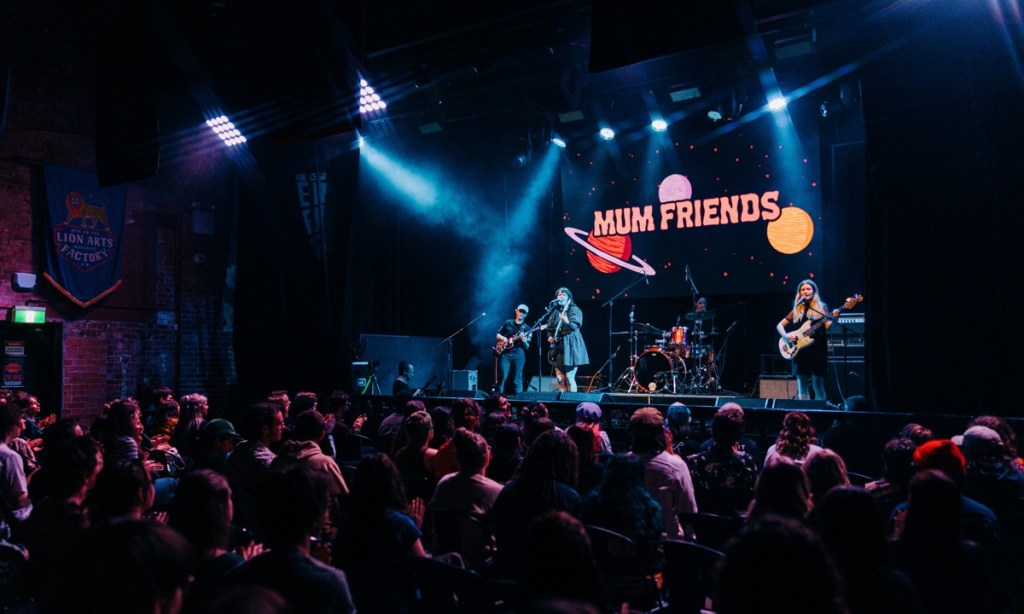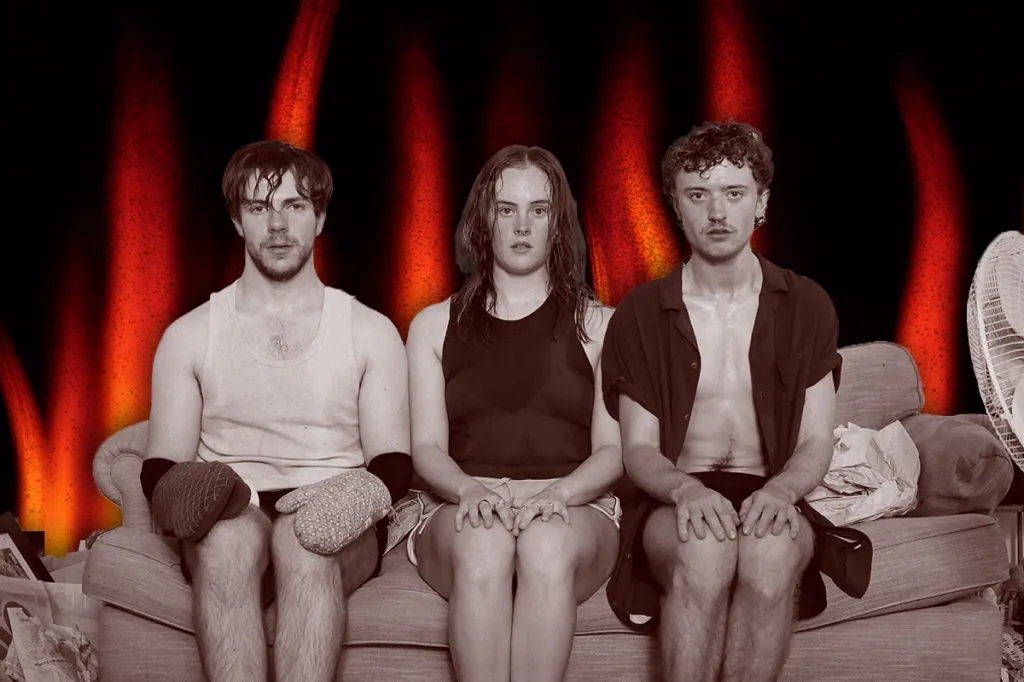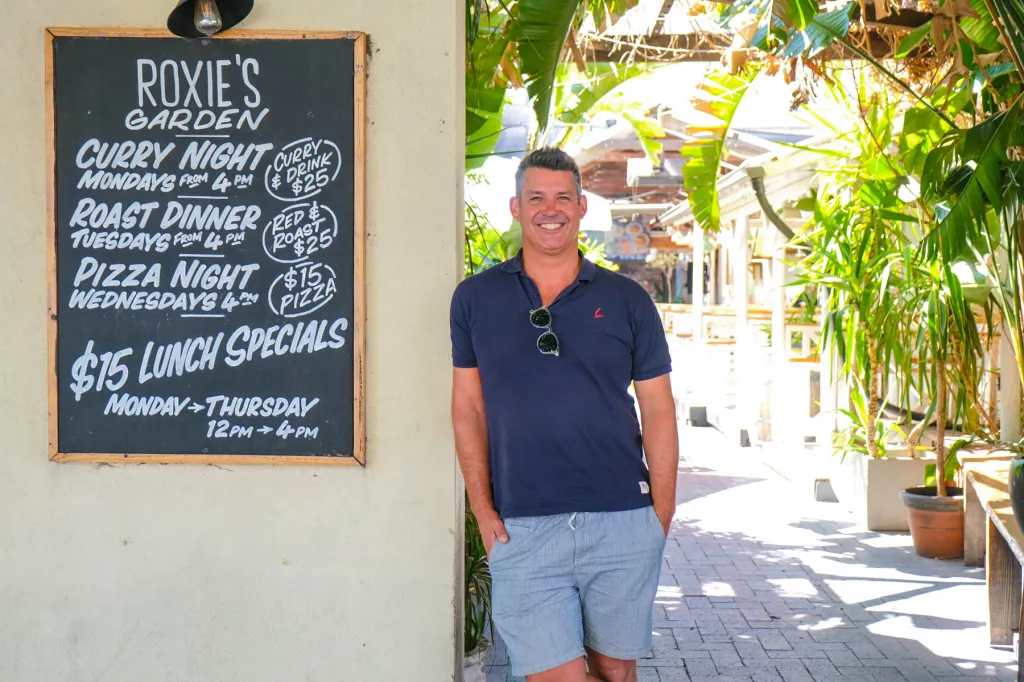SA’s live music industry is worth half a billion dollars

The importance of South Australia’s live music industry to the state economy has been reinforced by a new report. CityMag examines what it means for the local scene.
South Australia’s music industry contributed $490 million to gross state product in the financial year 2022/23, up from $375 million in 2015/16, according to the “Economic Contribution of the Music Industry to South Australia” report released today.
The study was produced by BDO’s EconSearch, supported by the Music Development Office, the City of Adelaide and Festival City ADL and looks at the resilience and challenges of the sector.
The report found that about a quarter of the $490 million is from related expenditures when punters attend events, including food and drink, transport and merchandise.
In a snapshot of what event attendees in SA are spending, tickets and food and beverages received the highest spend, followed by merchandise and transport.
MusicSA’s CEO Christine Schloithe says given the increased pressure on the industry, such as venue closures and festival cancellations since the pandemic, the figures are a pleasant surprise.
“We expected that there might be some growth in some pockets of the music industry,” she says.
“But given the tough time the industry had and the many changes that are ricocheting through the music industry at the moment, I actually had anticipated that perhaps there might have been a decline in the overall impact of the industry in that time.
“So the fact that it had grown, not only grown, but as much as it did, was quite a surprise.”

Adelaide band The Mark of Cain were inducted into the SA Music Hall of Fame in 2022. Photo: Brett O’Malley
Despite the growth, report author BDO found demand for creative arts has not returned to pre-pandemic levels and challenges in costs, writing, producing and selling music are hitting the sector hard.
Christine says the 2022/23 data stepped far away enough from Covid that they were able to get more authentic readings.
“Things are fundamentally different,” she says.
You might like
“When we first came out of Covid for example, we saw quite a high level of touring activity and festivals, like ‘we’re so excited to be able to access music again in all of its forms’.
“It was really pulling out of the gates very quickly, probably at an unsustainable level.
“What we’ve seen in the data is that this is where the pendulum swung back a little bit to more of what is the new kind of operating environment for the industry.
“So, having really sat down and taken on board a lot of the data, I think I’d be fairly confident saying that if we were to do this again on this financial year or next financial year, that the figures wouldn’t be too dramatically different.”
The report found for every $1 contributed directly by the music industry, there was an additional $1.50 contributed to gross state product from flow-on effects that spread across the state as businesses supply one another, pay employees and sell goods.

The report also found a sentiment of concern for Adelaide’s nightlife economy. This picture:live music at Sugar Nightclub, by Luke Eblen
For job growth, it found in 2022/23, the industry produced over 9200 jobs, up from 6300 in 2015/16.
Given many employment opportunities within the industry are part-time or casual, the 9200 roles are equivalent to about 5000 full-time roles.
Around 83 per cent of musician respondents to the interview portion of the study reported working on musician activities part-time, the rest working full-time or longer hours.
“It is very evident, when you look at the data, that while there are really high-level jobs, the indicators are also that it is a part time or a casualised workforce,” Christine says.
“We know that some of that is in response to the dynamic flow, particularly of live music that often scales up across summertime, for example, with more outdoor events and more cultural activity at certain times of year.
“It is a difficult environment for artists to work full time as professional musicians and gigging artists in South Australia.”

The report found that the sector wants funding targeted at rehearsal spaces, SA-exclusive events, hosting national awards in SA, recording studios, and more. This picture: Teenage Joans at the 2021 SA Music Awards, Samuel Graves
Christine says the casualisation of the industry extends beyond artists, with roles like artist management, marketing or agency work also having similar limitations, as do venue operators.
“Acts coming through dedicated small light music venues, they’re not necessarily opening every single day, so it would be hard to argue that venue operators are being employed in an equitable time basis as well,” she says.
“So that is, I would say, one of the really big risks for our industry, and I do think it is one of the things that has potentially prevented us from taking those steps and evolving into a more established industry, and that’s exactly areas that I think future investment really needs to be focused on.”
The report highlighted the sentiment that mid-level employees are being lost to other states that offer opportunities for personal and professional growth that are not present in South Australia.
Christine says this is also due to the limitation of job stability in the industry, which pushes people to leave the state or change industries altogether.
Subscribe for updates
“If someone wants to learn from other professionals or be in an environment where they’re not the expert and they can be mentored and coached, we don’t necessarily have that high number of really accomplished professionals staying in the state who are able to provide the next level opportunities,” she says.
“People sometimes just need to put themselves in another environment, move to a much bigger pond where they can get that career opportunity or develop that skill level.
“We hope, in time, that those people might move back to South Australia and reinvest back in the industry here and help grow it here.”
But she says a challenge of bringing workers back is that “they just consider it too much of a risk” if they think they won’t be able to work the same amount or earn the same income.
Cultural shifts and the impact of digital platforms are also highlighted in the report as an opportunity for growth.
“I do think South Australia has got some really unique opportunities, and we’ve missed out a lot in the past because we are geographically disconnected from the eastern seaboard, which is where a lot of the national business takes place,” Christine says.
“But the rise of technology and digital engagement and the shift in how people continue using globally means that South Australia now can actually just operate in those global markets right out of the gates.”

The festival sector is under pressure from rising costs, with Vintage Vibes, Groovin the Moo and Harvest Rock all cancelling their 2024 editions. Picture: Heaps Good festival 2023, Samuel Graves
The report found younger generations are more dependent on digital platforms like Spotify and TikTok for their music. This was seen as a pro for accessibility, but a con in the sense that algorithms may not show users locally made music.
The report found festivals find it harder to pick successful lineups due to this digital shift.
“Traditionally, [interviewees] explained that when they were putting together a lineup for a festival, they would only have a handful of larger international acts, with the rest being small to mid-sized artists from around Australia,” the report reads.
“They would pick artists from radio shows promoting local music as they represented consumer preferences and trends.”
Being fed international artists online, and a lack of local exposure led to “unexciting line ups or increases in ticket pricing to accommodate the cost of having more international artists attending, which have both played a part in the recent fall in festival interest and ticket purchases,” the report found.

The report found consumer interest is shifting towards big-ticket events like Taylor Swift, rather than smaller shows or festivals. This picture: Spin Off 2023, supplied.
Christine says to move forward, they need increased investment in the industry and that a balancing act is needed between local and touring acts.
“The industry is an ecosystem, and the ecosystem is only healthy when all of the parts of the industry are working,” she says.
“I consider it is equally important that we invest in our grassroots industry and support the artists of the future to not only grow their skills with artists, but then to take those steps and think about export and working in the global market
“We need to kind of grow grassroots up and out but I think it’s also just as important to have those big touring acts touring in South Australia and have access to those festival stages and those big environments.”
Arts Minister Andrea Michaels says the Malinauskas Government supported Music SA to undertake this research because they know how important music is to South Australia.
“Since coming to government, we have invested millions to support artists and live music venues and as this report demonstrates, that has assisted them to recover from the impacts of the pandemic,” she says.
“We will continue to ensure the South Australian music industry has a bright future in South Australia.”

